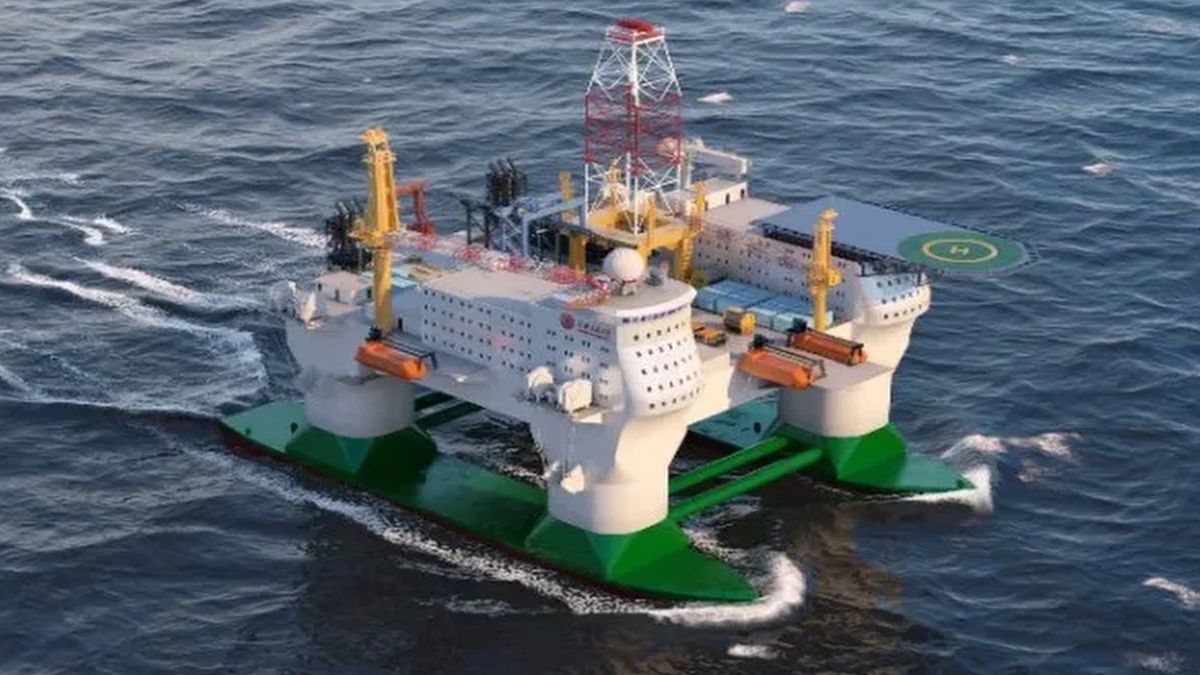China is at the forefront of technological and military advancements. And what better than a mobile, nuclear-blast-resistant floating artificial island to prove it. Beijing has begun work on constructing a colossal floating artificial island that they claim could even withstand a nuclear attack.
Chinese authorities insist that the project is scientific in nature, but claims of it being nuclear-resistant has raised eyebrows.
What is known of China’s new construction? We have the answers here.
About China’s new floating artificial island
China has begun work on its first floating artificial island, which has officially been named the Deep-Sea All-Weather Resident Floating Research Facility, and it is expected to launch in 2028.
According to plans published, China is constructing a 78,000-tonne, semi-submersible twin-hull platform with the capacity to house 238 people for four months without providing fresh supplies.
Professor Yang Deqing associated with Shanghai Jiao Tong University noted in a peer-reviewed paper that the “deep-sea major scientific facility is designed for all-weather, long-term residency”. It will also have systems to ensure emergency power and communications. The facility will be equipped with suitable systems that will ensure smooth navigation control.
The design plans also reveal a giant platform 138 metres long and 85 metres wide, with a deck towering 45 metres over the waves. This new floating artificial island is also expected to be as large as China’s newest Fujian aircraft carrier — it is estimated to have a displacement of 80,000 tonnes — and will also be to cruise at 15 knots while supporting over a hundred researchers.
Notably, the Deep-Sea All-Weather Resident Floating Research Facility, which has been listed as a national scientific infrastructure programme under China’s 14th five-year plan, has been in development for more than a decade.
Also referred to as a far-sea floating mobile island, the island will also boast of the capability of operating in rough seas, even being able to withstand powerful tropical cyclones on Earth.
But how exactly will this new construction be nuclear resistant? People in the know have revealed that to make it impenetrable, they are using what is essentially a microscopic lattice of folded metal tubes arranged in a precise geometric pattern. This structure works like a magical sponge. When squeezed, it contracts inward, becoming denser and stronger, reports South China Morning Post.
Purpose behind this island
Chinese officials note that the Deep-Sea All-Weather Resident Floating Research Facility will purely be a research vessel. The facility promises to become a “paradigm shift” in ocean science, offering real-scale testing capabilities that no laboratory or existing ship can match, said officials as quoted by South China Morning Post.
However, the materials being used in it and its intended operating areas has raised suspicion. The artificial floating island, once built, will operate in the contested waters of the South China Sea.
Experts also note that unlike fixed research stations or conventional vessels, this artificial floating island could offer presence without permanence. It could be deployed to contested waters for research, maintain its presence as situations evolve — all at a lower cost.
As South China Morning Post reports, the facility could serve multiple functions as a resilient command node, a logistics hub or a surveillance station. Its 120-day endurance without resupply exceeds that of many nuclear-powered aircraft carriers, offering persistent presence in remote areas.
Some analysts also believe the platform signals China’s determination to dominate the ‘blue economy’, which includes offshore energy and deep-sea minerals.
Defence experts worry that this floating artificial island, once constructed won’t just be a lab; it will be a forward operating base. Moreover, as it will fly under a civilian banner, it would be able to operate in zone that warships can’t occupy. As Defensenews stated in a report, “This dual identity — peaceful in appearance, powerful in capability — is exactly what makes China’s floating island so strategically unsettling. It is a vessel designed for discovery, yes, but also for deterrence, presence, and persistence in waters where Beijing’s ambitions run deepest.”
Building artificial islands in the South China Sea
The news of China’s construction of the floating artificial island comes weeks after it was reported that Vietnam is taking a page out of Beijing’s book and building artificial islands in the South China Sea.
According to a report by the Asia Maritime Transparency Initiative, Vietnam is developing new outposts in the Spratly Islands at a rapid pace, putting it on track to surpass the amount of land reclaimed by China. Satellite photographs reveal that Hanoi has undertaken dredging and landfill work at Alison Reef, Collins Reef, East Reef, Landsdowne Reef, and Petley Reef, “all of which had previously housed only small concrete pillbox structures.”
For those who aren’t aware, the Spratly Islands remains one of the main subjects of contention in the South China Sea, and are claimed in whole or in part by China, Taiwan, Vietnam, the Philippines, Malaysia, and Brunei.
Vietnam’s rapid development of islands is a result of China’s ‘Great War of Sand’ project in 2013, through which it created large-scale artificial islands in the South China Sea.
With inputs from agencies


)

)
)
)
)
)
)
)
)



